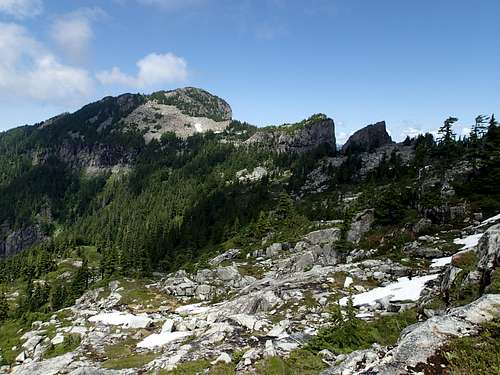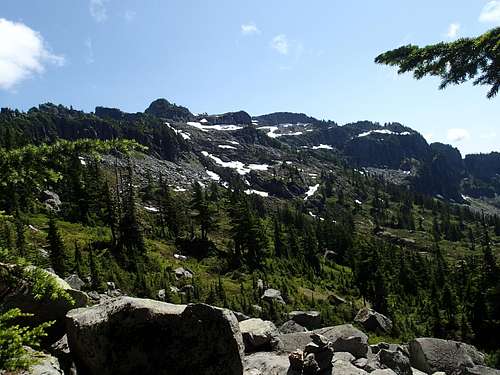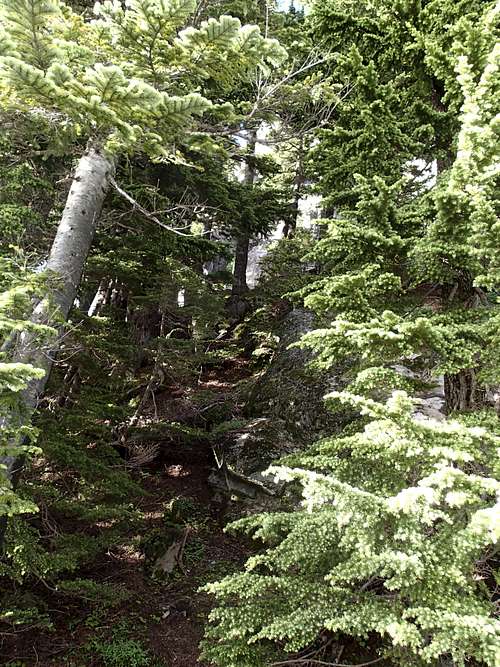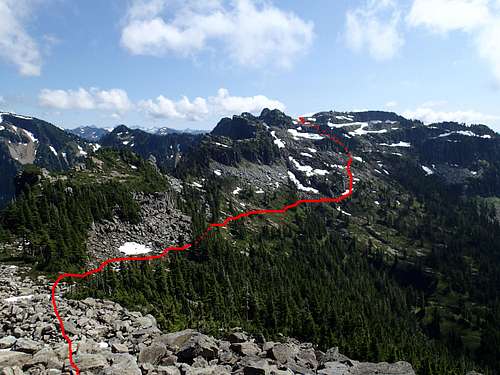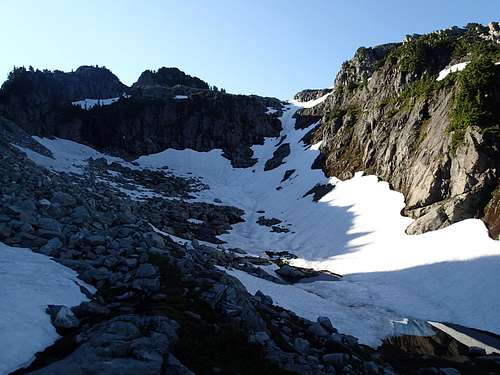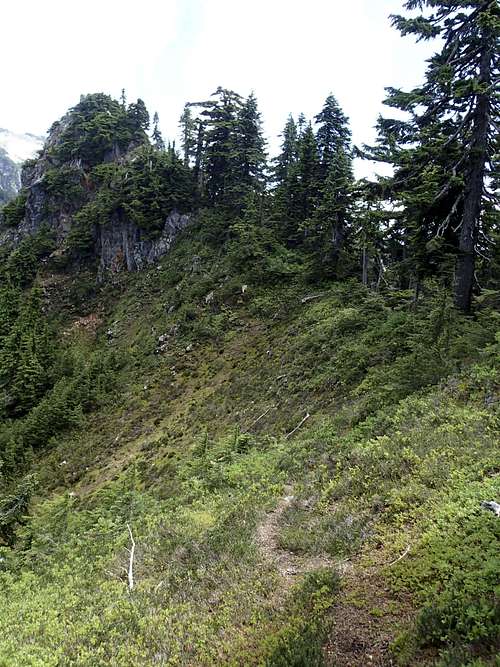-
 15678 Hits
15678 Hits
-
 74.53% Score
74.53% Score
-
 5 Votes
5 Votes
|
|
Route |
|---|---|
|
|
47.77470°N / 121.58°W |
|
|
Mountaineering |
|
|
Spring, Summer, Fall |
|
|
One to two days |
|
|
Class 3/4 |
|
|
Overview
Contrary to the opinions of some, the West Ridge, and not Hourglass Gully, is the standard route on Mount Index. The traverse from Mount Persis is essentially an alternate approach for that route, but has both the complexity and quality of an individual route and should be considered as such. It has also been observed that the standard approach to the West Ridge is rapidly becoming overgrown and because this land is owned by the logging company it is unlikely to be restored/maintained. Therefore I submit that the traverse from Mt. Persis should become the standard route on the peak. It is a scenic, varied, strenuous, technical scramble requiring strong nerves, good route-finding skills, and a certain disregard for foliage.Approach
Follow Forest Service Road 62 from Highway 2 and take the first left turn, follow that road until it too branches and take the left. The road from here is becoming extremely rough and should really only be attempted by higher clearance vehicles (my corolla may never forgive me).At the next junction again take a left and park at the turn out just before the beginning of the Mt. Persis trail.
Follow the trail to the summit of Mt. Persis, or, if you are so inclined, skip the summit and stop at the second small lake/large tarn.
Route Description
Special note: when I did this climb, all I had was a topo with some notes on the west ridge and a general idea that the route followed the ridge crest from Persis. This made for a rather interesting day and a half and the route-finding was a real adventure. I would recommend it. If, however, this is not the experience you are looking for, or you are trying to do a one day climb, some beta is in order.From just past the higher of the two lakes below the summit of Mt. Persis there are several gullies that lead to the boulder field below. Some are more technical than others and at least two are marked with cairns.
From the bottom of those gullies angle climber’s right to the base of the boulder field and then cross the first basin before descending to the tree line to skirt the base of the first gendarme. Staying no more than 50-100 feet below the cliff bands a faint trail should be visible and if you exit to the next boulder field at the right point there will be cairns.
Cross the second basin and aim for a series of ledges beneath the fourth gendarme (the second and third pose no navigational dilemmas), several options exist but avoid the highest ledge system.
Climb the snow couloir at the head of the third basin, this should angle slightly climber’s right. It is possible that later in the year this melts out and is a scree field.
From the pass at the top of the couloir, descend through tarns and meadows following cairns and a climbers trail. This may be your last flowing water for some time.
After the last tarn follow an unlikely-looking series of steep heather climber/goat/marmot trails down the south face of the ridge connecting the Persis and Index massifs. This section is unpleasant and involves much tree climbing/bush belaying. Whenever possible cross to the north side of the ridge, where you will find a tiny climber’s trail on an rather precipitous heather slope. Crossing back and forth several times is necessary before reaching the West Col. The final gully down-climb is probably the sketchiest part of the entire route. Other route options may exist.
From the West Col the route is rather straight-forward, either head up the crest of the ridge or enter a basin to the climber’s right, either route will drop you at a small pass and the base of the permanent snow field. Climb or traverse the snowfield and then scramble up easier ground to the summit.
Descent Options
Reverse Persis Traverse - The simplest way down is back the way you came. That gully’s no fun on the way up either and the Persis trail is even more of a bitch on the way down but it’s all ground you knowHourglass Gully - For the full traversing experience some may want a one way trip. The easiest way, car-shuttling-wise, to accomplish this is to leave a vehicle at the Lake Serene parking lot and descend Hourglass Gully. There is no other sense in which this is the easiest way. Finding the gully without previous experience has historically been problematic. Unless you possess some serious 5th class down-climbing skills, the gully must be rappelled, requiring you to carry a rope all the way from the Persis trailhead. The descent from the ridge crest above Lake Serene to the pass above Lake Serene makes the entire Persis-Index traverse look like the Big Four ice-caves trail, and unless you feel like imitating a gorilla you will want to rappel large sections of it as well. Have fun.
West Ridge - While less heinous and epic-prone than Hourglass Gully, this descent necessitates a very long road-walk. If you are in it for the mileage then go for it, but unless you want to hike all the way back up to the Persis trailhead you will still need to leave a car at the Rd 62 gate.
Essential Gear
Ice-axe and crampons for permanent snowfields.Rope and harnesses for the hourglass gully descent.
The faint-at-heart will probably want a hand-line on sections of the connecting ridge, as it is basically class 2/3 with a death fall.


